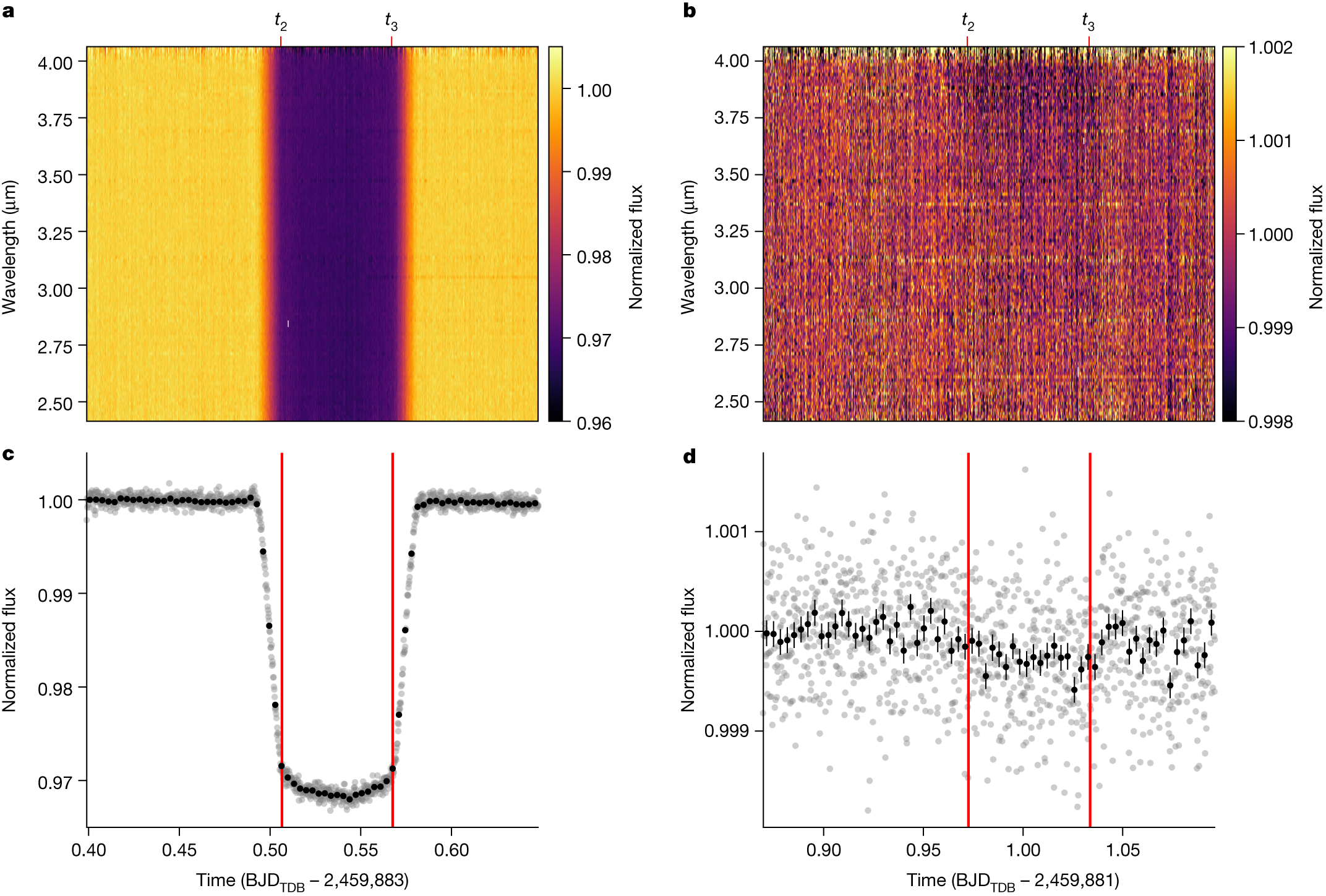James Webb Space Telescope Feed Post
Nature | Methane throughout the atmosphere of the warm exoplanet WASP-80b
Abstract: The abundances of main carbon- and oxygen-bearing gases in the atmospheres of giant exoplanets provide insights into atmospheric chemistry and planet formation processes. Thermochemistry suggests that methane (CH4) should be the dominant carbon-bearing species below about 1,000 K over a range of plausible atmospheric compositions; this is the case for the solar system planets and has been confirmed in the atmospheres of brown dwarfs and self-luminous, directly imaged exoplanets. However, CH4 has not yet been definitively detected with space-based spectroscopy in the atmosphere of a transiting exoplanet, but a few detections have been made with ground-based, high-resolution transit spectroscopy including a tentative detection for WASP-80b. Here we report transmission and emission spectra spanning 2.4–4.0 µm of the 825 K warm Jupiter WASP-80b taken with the NIRCam instrument of the JWST, both of which show strong evidence of CH4 at greater than 6s significance. The derived CH4 abundances from both viewing geometries are consistent with each other and with solar to sub-solar C/O and around five times solar metallicity, which is consistent with theoretical predictions.
